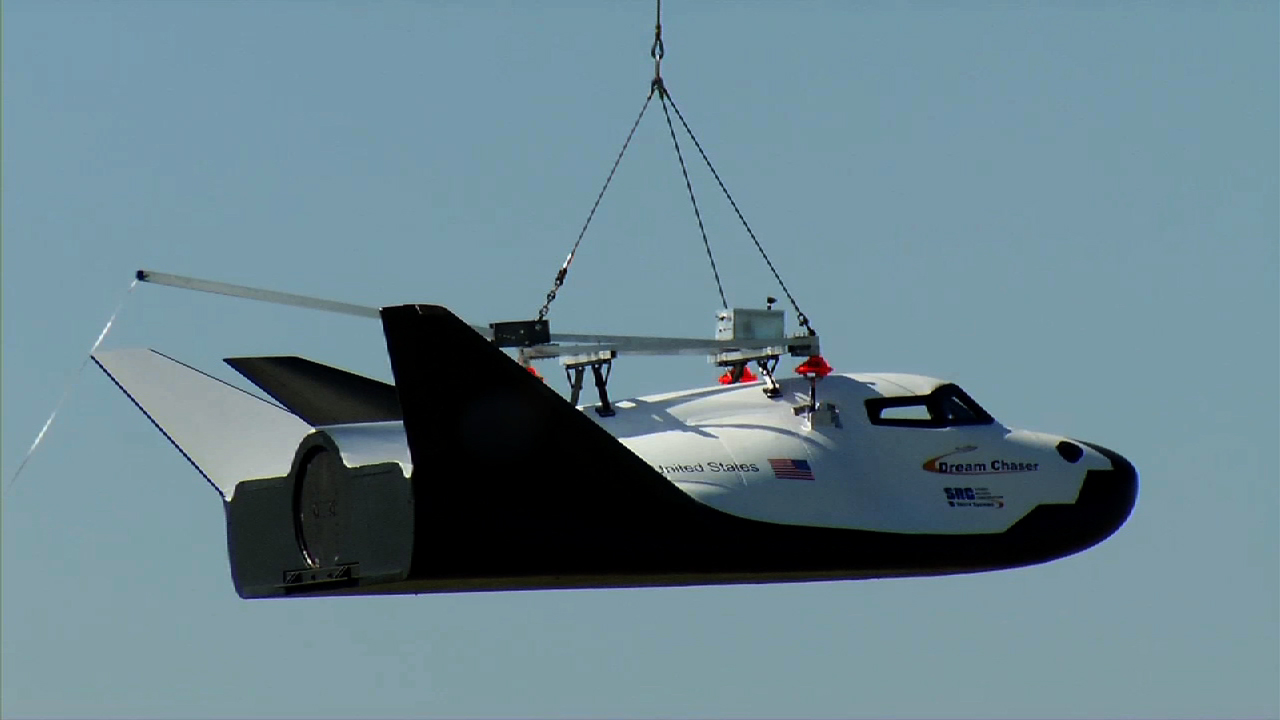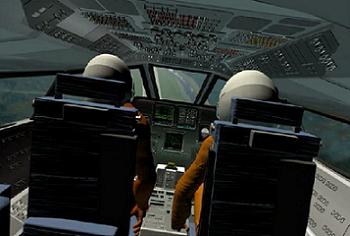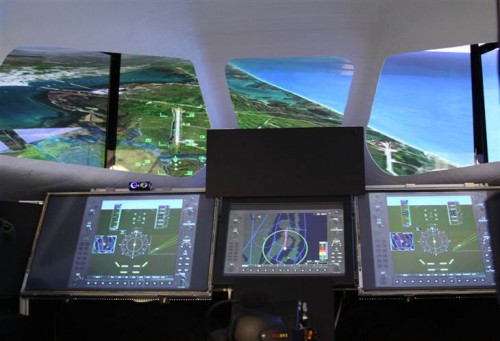
On Saturday, Oct. 26, Sierra Nevada Corporation put their Dream Chaser test article through its first free flight Approach and Landing test, or ALT, at NASA’s Dryden Flight Research Center in southern California. The important flight test appears to have gone as expected until an anomaly was encountered with the left landing gear deployment, which caused the Dream Chaser test article to sustain damage once it touched down on runway 22L at Edwards Air Force Base.
There is not much official information available from NASA or Sierra Nevada as of yet regarding the problem, or the extent of the damage, but the company did release a statement late Saturday evening on their website:

“While there was an anomaly with the left landing gear deployment, the high-quality flight and telemetry data throughout all phases of the approach-and-landing test will allow SNC teams to continue to refine their spacecraft design. SNC and NASA Dryden are currently reviewing the data. As with any space flight test program, there will be anomalies that we can learn from, allowing us to improve our vehicle and accelerate our rate of progress.”
The Dream Chaser was carried aloft by an Erickson Air-Crane helicopter—same as it was for the captive-carry flight tests—and was released at approximately 11:10 a.m. PST. The vehicle’s automated flight control system did its job, steering the test article to its intended glide slope automatically based on data collected by the vehicle’s sensors and flight computer. Less than a minute after being released, the vehicle touched down on the runway centerline, exactly replicating the orbital re-entry flight path from 5,000 feet altitude to the Edwards 22L runway landing.
Unofficial reports from the ground imply the damage was minor & repairable enough to use this test article again as was originally intended, and that the flight otherwise went as expected. SNC has not yet elaborated on those unofficial reports.
NASA’s Dryden Flight Research Center also released an official statement Saturday afternoon regarding the incident:

“No personnel were injured. Damage to property is being assessed. Edwards Air Force Base emergency personnel responded to scene as a precaution. Support personnel are preparing the vehicle for transport to a hangar. Sierra Nevada Corporation engineers, NASA Dryden Flight Research Center and U.S. Air Force representatives are looking into the anomaly that occurred.”
The Dream Chaser test article used for Saturday’s flight test is the same vehicle SNC will use for eventual piloted flight testing—the test article is supposed to be sent back to Colorado for retrofitting after the automated ALT tests are complete. Without understanding the extent of the damage from Saturday’s flight test, there is no way of knowing yet whether or not this same vehicle can be repaired to carry out additional testing as planned. SNC and Lockheed Martin are currently working together in active build of the orbital spaceflight Dream Chaser vehicle, which will launch in the coming years on crewed and uncrewed missions as dictated by the flight test program in the next phase of NASA’s Commercial Crew Program (CCP).
AmericaSpace has reached out to Sierra Nevada for additional details and comment regarding this first free flight test and will have a more in-depth story on what exactly happened, as well as what the next course of action is, as soon as possible. Sierra Nevada will hold a news conference this Tuesday, October October 29, elaborating on the news.
Want to keep up-to-date with all things space? Be sure to “Like” AmericaSpace on Facebook and follow us on Twitter: @AmericaSpace




The simulator software needs work, as the runway alignment is way off from both the shuttle landing runway, and CCAFS’s runway.
According the the astronauts who have flown the sim it works great